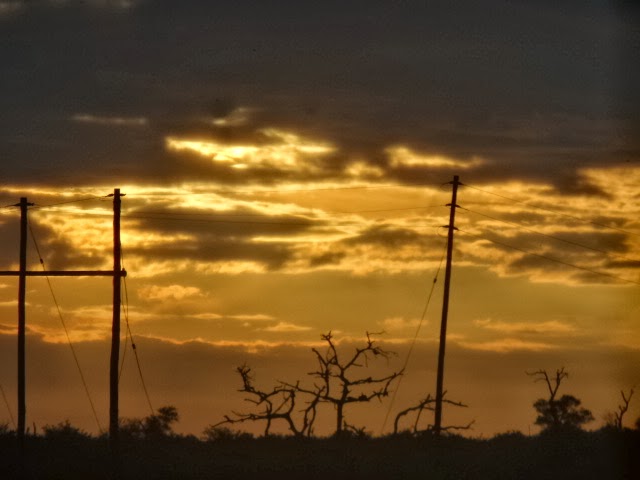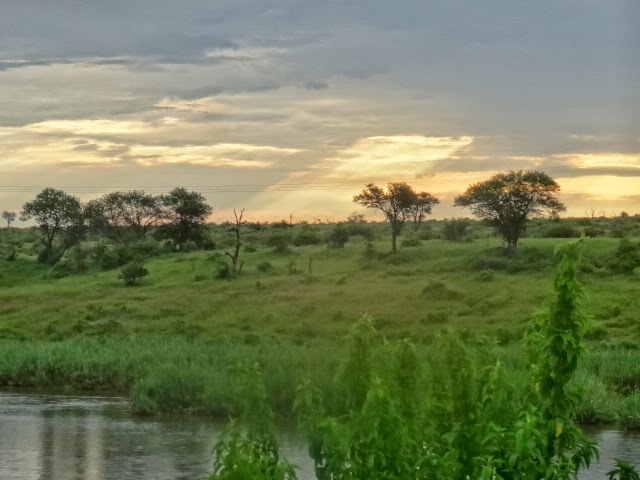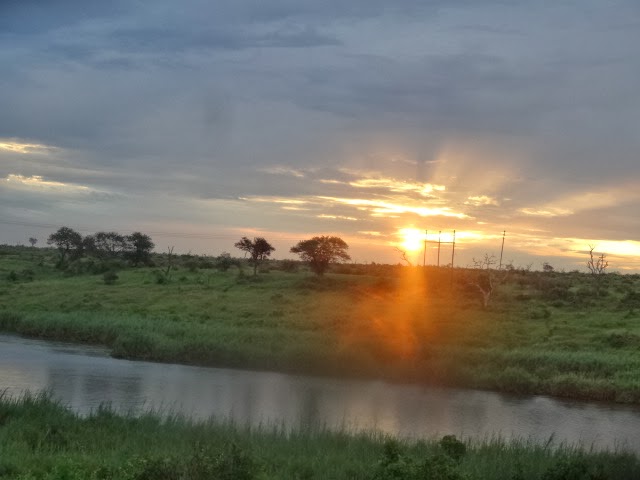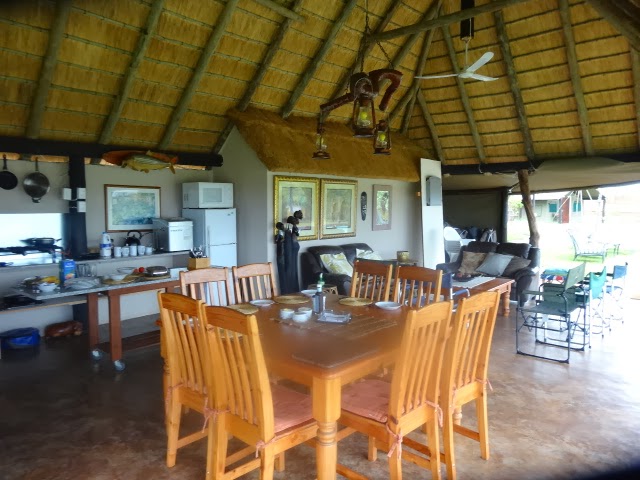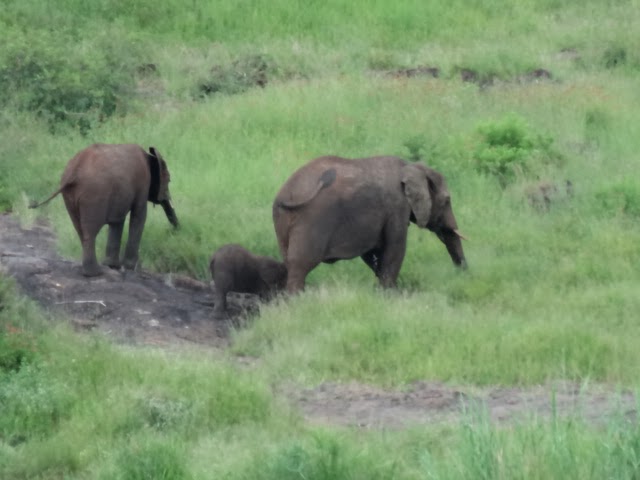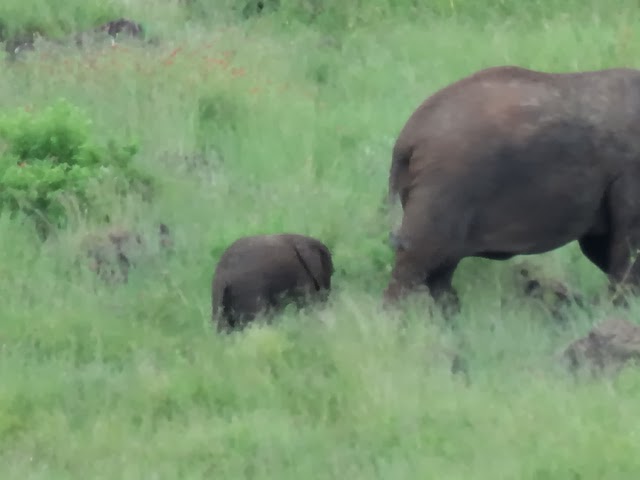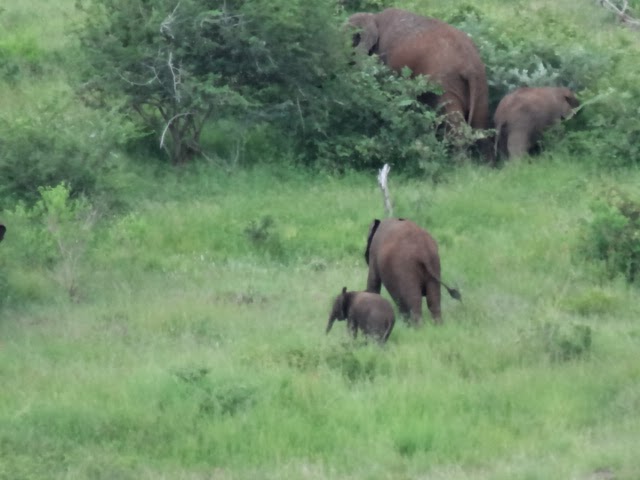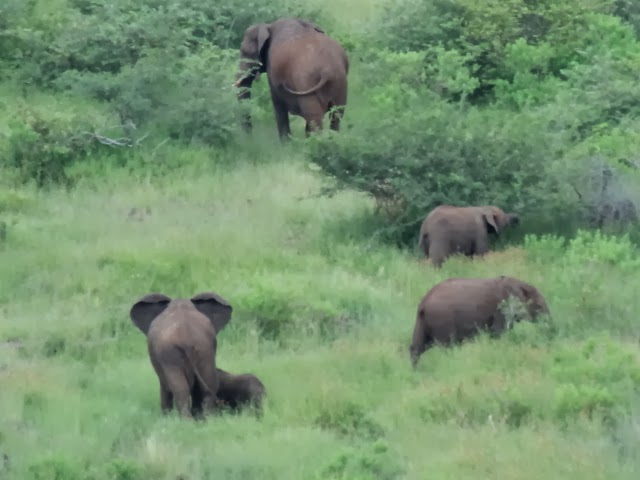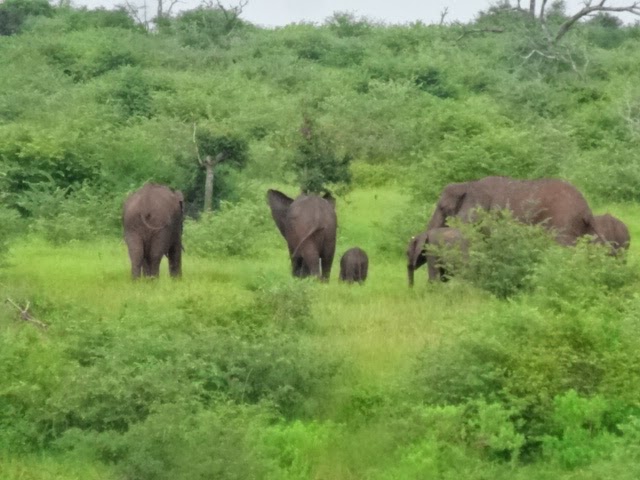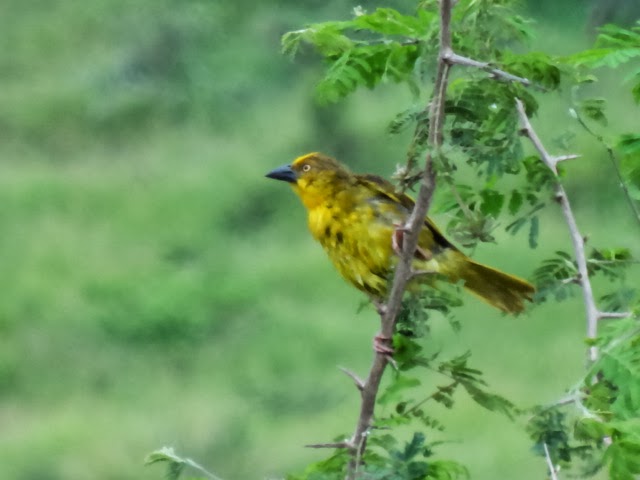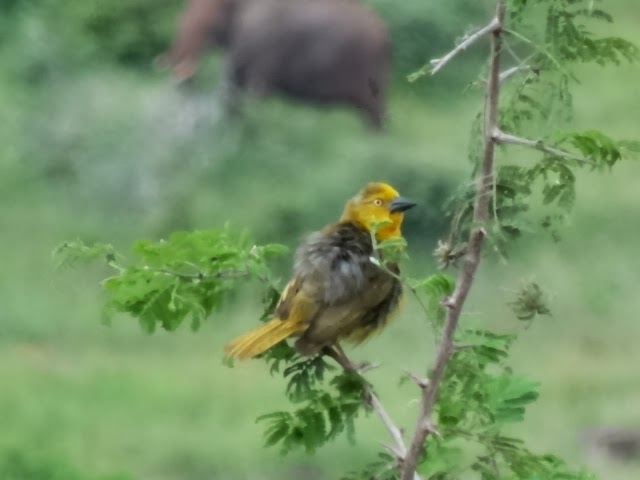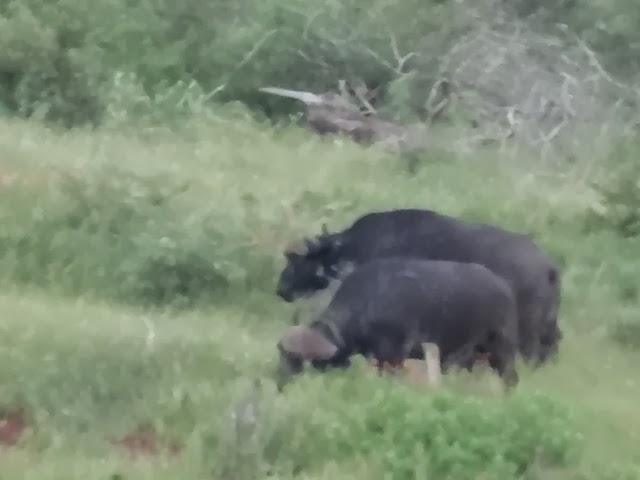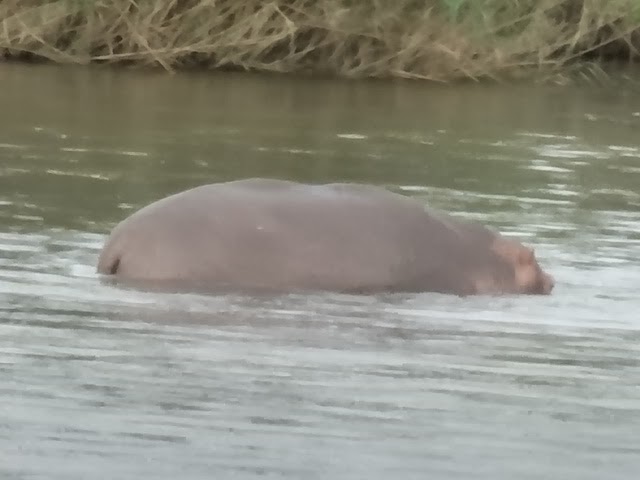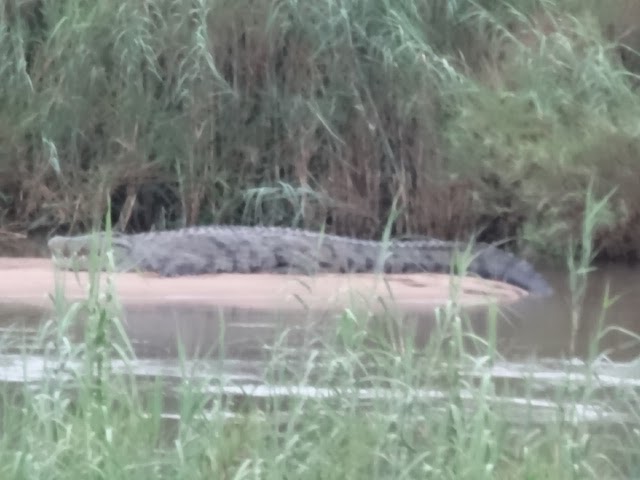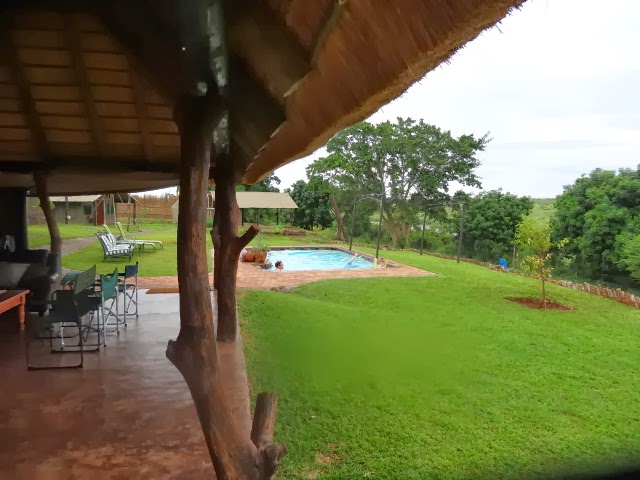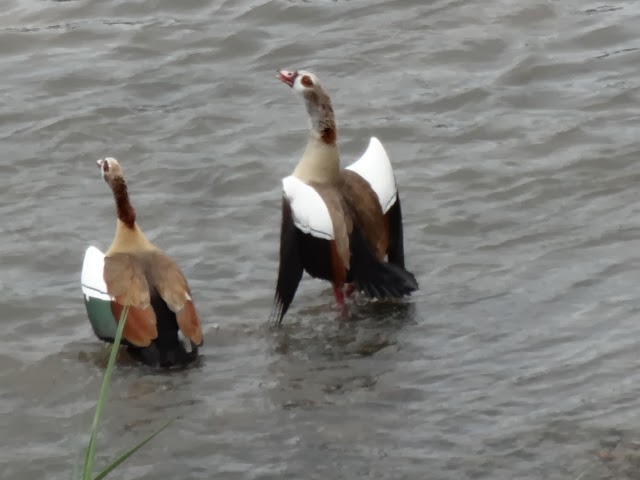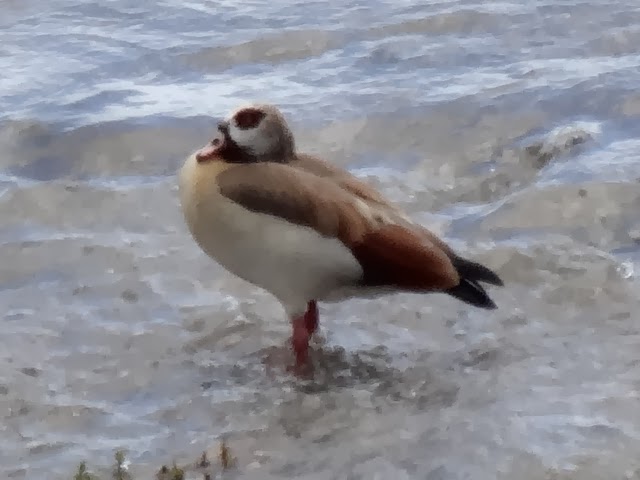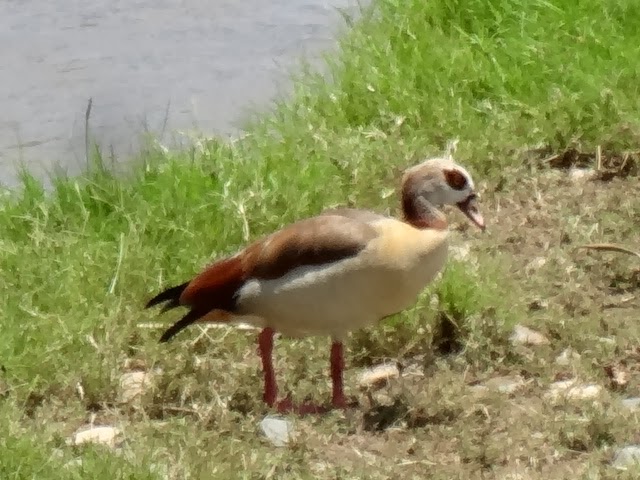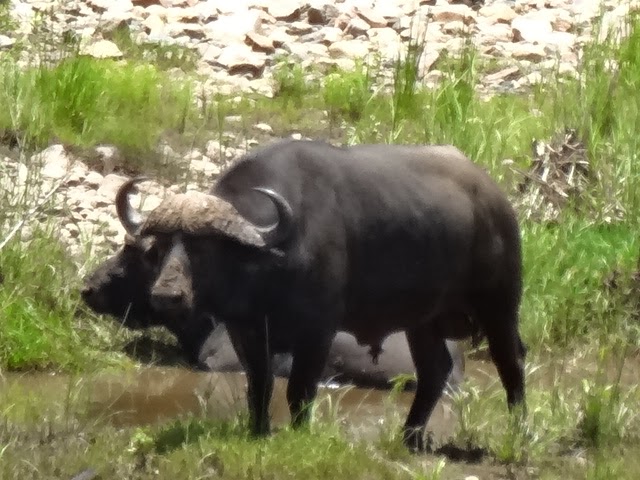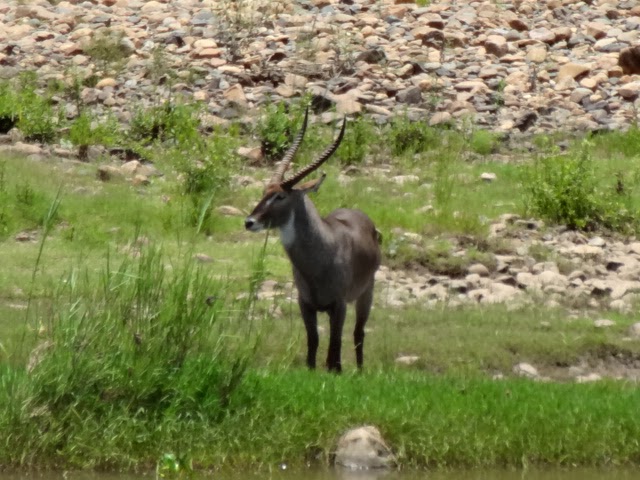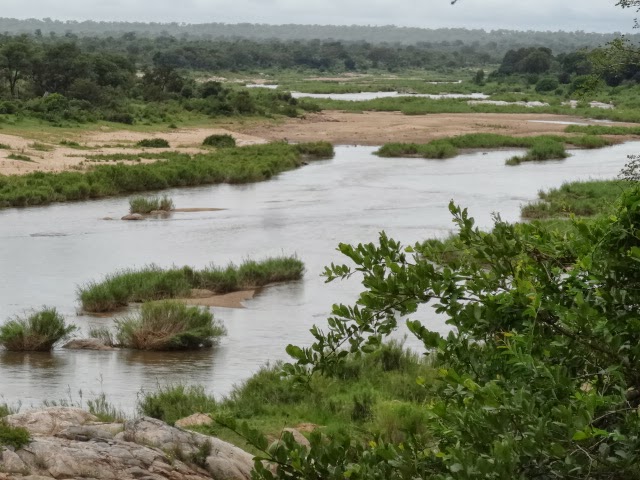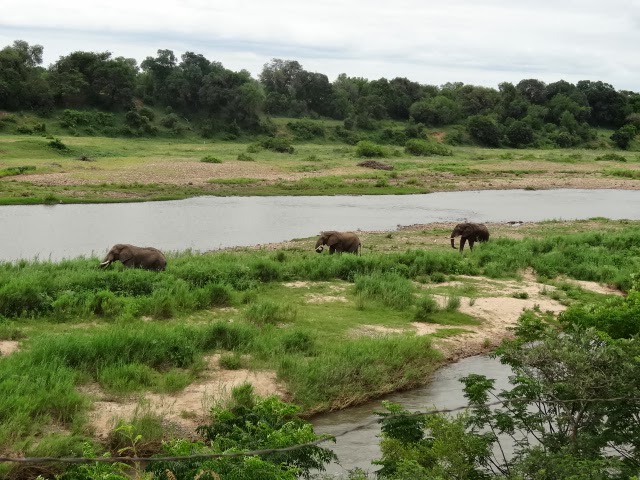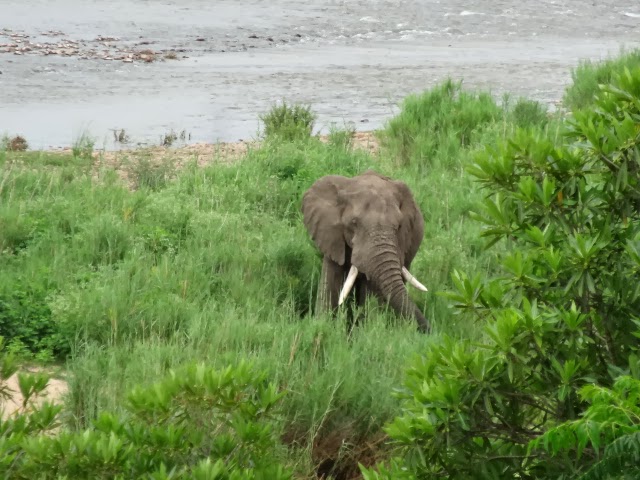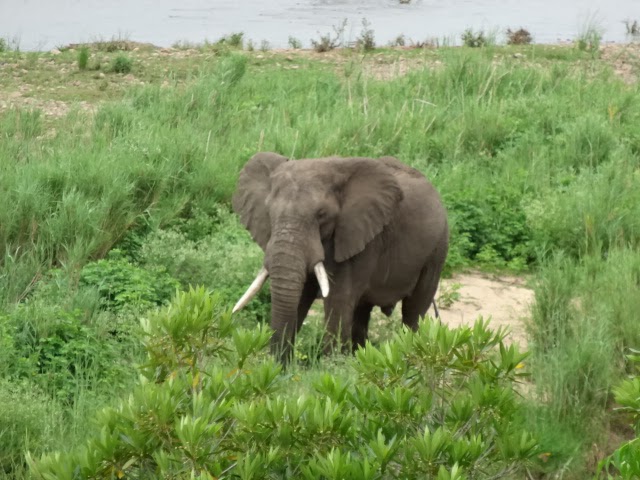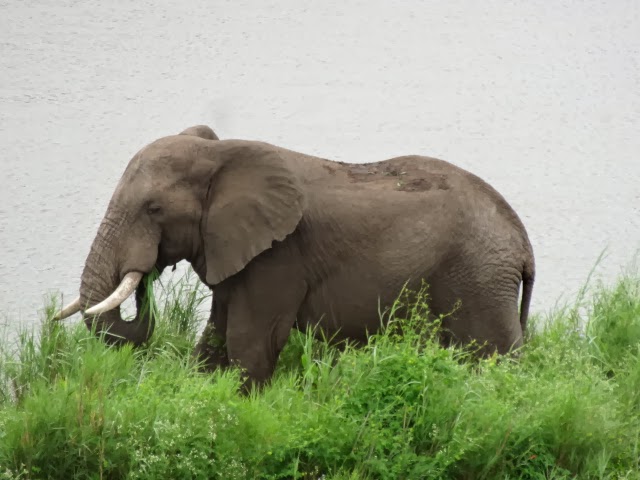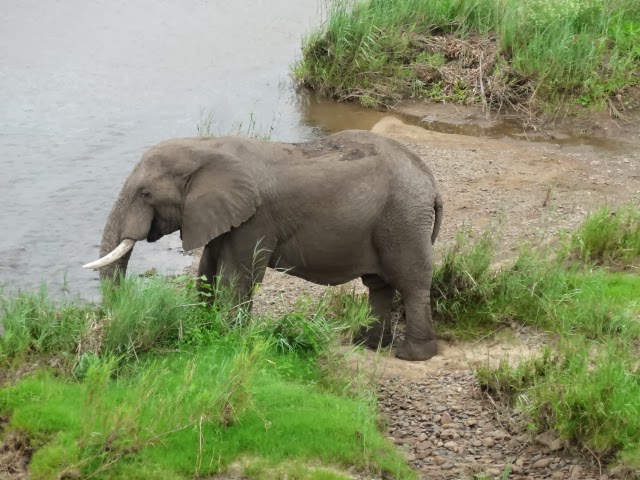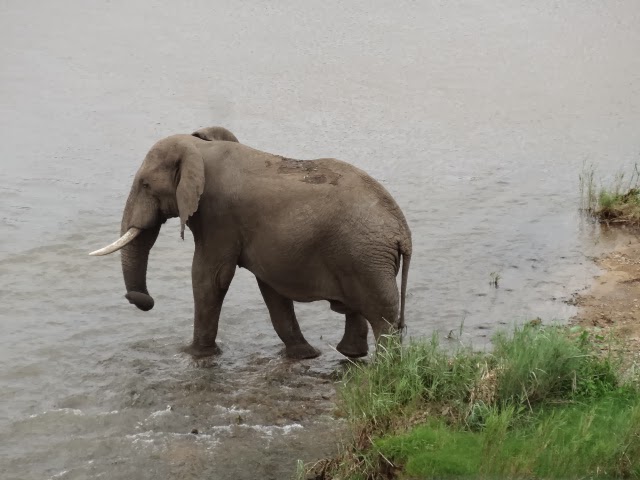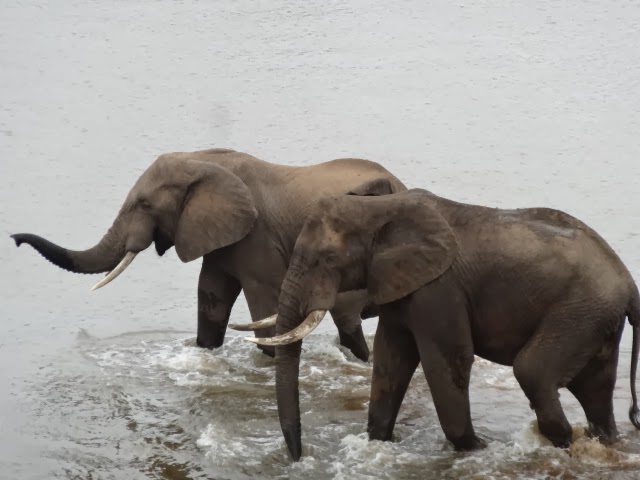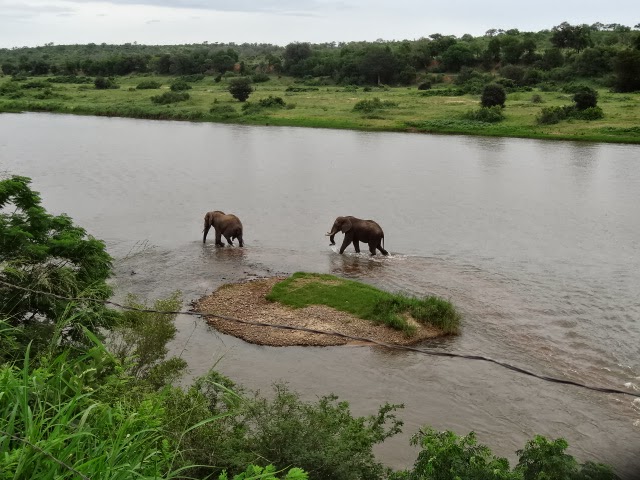 |
| Four waterbucks are sunning on sandbars. |
“Sighting of the Day in the Bush”
 |
| Big Daddy Kudu was resting in the shade on a hot day. |
Every few days, we jump into the little car to drive to the Crocodile River. Along Seekoei Street ( I dare you to try to pronounce that street name), several stopping points offer views of the Crocodile River, which separates Marloth Park from Kruger National Park.
The river is a lifeline for wildlife that needs to drink and cool off in the often low water riverless rainy. Now, still in the rainy season, it isn’t nearly as prolific as we’d seen when we were here for years ago.
Here’s a photo we took yesterday of the Crocodile River (below). It’s been scorched these past few weeks:
 |
| In a good rainy season, these sandbars may be covered and the river may be flowing. We took this photo yesterday from a sheltered brick overlook on Seekeoi Street. Now it stands almost entirely still awaiting the next rains. |
Here’s a photo we took four years ago of the Crocodile River from a similar location shown on our link here:
 |
| We took this photo on December 28, 2012. Note how much more water there was in the Crocodile River than in yesterday’s picture above. |
From this site: “The Crocodile river is 1000km long and it spans over 4 provinces and through Botswana & Mozambique. It originates north of Dullstroom, Mpumalanga, in the Steenkampsberg Mountains Downstream of Kwena Dam, the Crocodile River winds through the Schoemanskloof and down the Montrose Falls. It then flows eastwards past Nelspruit and joins the Komati River at Komatipoort.The Crocodile River in Mpumalanga has a catchment area of 10,446 km2. Upstream it is a popular trout fishing place. It flows through the Nelspruit industrial area, the Lowveld agricultural area and borders the Kruger National Park. The decrease in the flow of the river is probably due to water abstractions for irrigated fruit farming.”
 |
| One male and two female waterbucks resting on a sandbar. |
 |
| Several oxpeckers are nearby as she lounges on the sandbar. |
With the rains, comes the most valuable benefit of all…the growth and proliferation of green grasses, plants, and trees that many animals in this environment require for the sustenance of life itself.
For the first time, we’ll be in Marloth Park during the dry season which we hear can be devastating for the wildlife. Many homeowners in the area make a point of trying to feed the wildlife as much as possible during this period. This is both good and bad.
 |
| A lone elephant at quite a distance. |
Many homeowners in Marloth Park have homes in other parts of South Africa or other parts of the world. If they come for a few week holiday, feed the animals and then are gone for many months to come, the wildlife who’ve become accustomed to their generosity while they’re here, are left confused and deprived when their “supply” is no longer available.
With the best of intentions, we’ll be gone a year from now and hope there will have been plenty of rain for those dear creatures we also favored with food while we were here. There’s no perfect solution.
 |
| The elephant is eating the lush green vegetation on the sandbar. |
Most animals here in the park are omnivores thriving on the vegetation of one sort or another. It’s with this knowledge that all of us provide some nourishment when we can. But, sadly its never enough and culling becomes a disheartening reality when there isn’t enough to go around.
Yesterday, as mentioned above, we made our usual jaunt to the Crocodile Rive every other day, always hopeful we’ll get a glimpse of the magnificent visitors to this scenic environment.
 |
| We always feel fortunate to see one of these stunning animals. |
We stopped along the Seekeoi Street many times ending up at the brick lookout and for the first time since our return to Marloth, there were tourists there enjoying the scenery. It isn’t long before most visitors hear of this particular spot, and we’ve been surprised not to see others there before us, most recently.
A group of perhaps a total of 12 people, with iPads, tablets, phones, and binoculars in hand, busily took photos of the scenic surroundings which included a lone elephant and several waterbucks, who seem to frequent the river more regularly than many other species.
 |
| A female waterbuck stands to check her surroundings. |
We stayed for awhile, chatting with the others people while taking several photos of our own. No doubt, we were at quite a distance from the wildlife but made every effort to keep a steady hand while shooting the images.
Back on the road, we spotted more wildlife, surprisingly out from under-cover on the extremely hot and humid day. Overall, as usual, it was a good outing in Marloth Park.
 |
| A type of goose we spotted, too far to identify. Any comments from our bird enthusiast friends? |
Soon, we’ll be heading to Kruger again but we’re hoping to do so after this extreme heat passes. The AC in the little car isn’t that good and we’re more likely to see more wildlife on a day with more moderate temperatures.
Soon, we’re off to Komatipoort to shop which will require five stops at various shops; the Spar Market, the pharmacy, the biltong shop, the meat market and the liquor store.
May YOU have a stupendous day!
Photo from one year ago today, March 15, 2017:One
| e year ago today, we got together with dear friends Linda and Ken, from the UK and whom we met four years ago in Marloth Park. We’ve since seen them here again, much to our delight and will see them again when they return from a cruise and other travel. For more details, please click here. |


